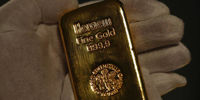Posted on November 05, 2021

By Paul Vanguard, for BullionMax.com
There isn't really a bad time to buy gold. It's not an investment that's going to make its buyers wish they didn't buy into the hype. Today, considering the relatively mild movent in gold's price despite a very favorable environment, is looking like a great time to buy bullion &ndash according to these three market experts.
Jon Deane, ex-JPMorgan Managing Director and CEO of Trovio, Goehring & Rozencwajg Associates managing partner Leigh Goehring, and WisdomTree global head of research Jeremy Schwartz are all market veterans. They've seen and lived through some of the best and worst times in financial markets. And all three recently spoke to Kitco about gold. And while each has a slightly different focus, they are, for the most part, in unison.
Deane highlights that we are in untested waters in more ways than many would like. It's not just that we are approaching an unprecedented financial crisis scenario with historic debt, historic stimulus and the bond market slowly fading into history. It's also that the world is changing and seems to be in a kind of perpetual "when is the next black swan event" mode.
The point is one reinforced by Goehring, who says that a black swan event over the next three years could trigger a gold-buying frenzy. This was on full display last year, and the kind of black swan event that struck everyone has almost made it unnecessary for more to happen in order for gold to explode. Perhaps it would be more correct to say that the criteria has been lowered.
Schwartz says that the expansion of the M2 money supply in the U.S., the depths of which are showcased by the government's unwillingness to track it anymore, is a head-turner. Certainly, the money supply expanding by 40% within a year does not bode well for a reserve currency.
And what happens when there's suddenly more money in circulation? What happens when a larger number of paper dollars start to chase the same amount (or possibly, thanks to supply chain snarls, even less) of goods and services?
And this brings us to inflation, the importance of which all three experts can't seem to overstate. Nobody's buying the temporary inflation idea, with Goehring saying that the five-plus-percent inflation rate will stick around for a minimum of 6 to 12 months. (Recently, Federal Reserve Chairman Jerome Powell (when can we start calling him Jerry?) said this allegedly-transitory inflation would persist " well into next year .") That's a massive increase over the Fed's self-imposed 2% target, the necessity of which is dubious to begin with. Personally, I'd be happier with 0% inflation forever.
More than just inflation itself, Goehring believes that sentiment surrounding it could be a tipping point. Though, as we discussed previously, the importance of sentiment isn't completely clear. However, one thing we can reasonably expect based on inflationary concern: Buying gold bullion might just replace Robinhood as the latest craze for all the cool kids. (Should we build a mobile app?)
All three experts assert that commodities are the place to be in right now. Why?
Here's the beauty of commodities: Because they have intrinsic value, they're much simpler than virtually every other type of investment. Commodities' prices fluctuate based on:
1. Supply
2. Demand
3. Inflation
This last point is sometimes difficult to understand! Think of a dollar as a measuring stick. At this moment, it takes 57 dollars to "measure" a 1 gram gold bullion bar. If your unit of measure, the dollar, shrinks, it takesmore of them to "measure" the gold bar. Right? But the gold bar didn't get bigger, did it? No, the dollars shrunk!
So when we say, "Inflation affects commodities prices," what we really mean is, "Inflation makes the same amount of commodities cost more."
Goehring says that something like a sudden spike in oil prices could cause investors to panic over inflation, as was the case in 1973. And when investors fear inflation, they tend to flee paper assets into the welcoming arms of commodities and other inflation-resistant assets.
Although it's a stretch, to put it kindly, to call today's Treasury Inflation-Protected Securities or TIPS "inflation-protected." As good old Charles Schwab informs us,
Most TIPS yields are negative today. While that might surprise many investors, consider the yields of nominal (non-inflation-protected) Treasuries. The 10-year Treasury yield is still positive at 1.5%, but after the rate of inflation is accounted for, that inflation-adjusted yield is below zero, as well.
That indeed comes as a surprise!
Back to Goehring's point about the 70s oil shock, with the ongoing supply chain disruptions, manufacturing issues and unexpected hits to world economies, it could be any crucial resource triggering this same effect. Just in the last year or two, we've seen "supply shocks" in automotive semiconductor microchips, lumber of all things, toilet paper (remember that??) and in the past few weeks, just about everything.
Deane, too, highlights that tangible assets are the ones to come out on top in environments like these. "Tangible" includes such difficult-to-transport assets as livestock and real estate alongside precious metals. Deane says that gold's fair value is currently between $1,800 and $1,900, with little risk and a lot of reward.
Deane thinks gold was more of an inflation trade in 2021 compared to the uncertainty trade last year. We may yet see the two come together in 2022.
If nothing else, remember one thing: when gold price goes up, it's usually because your dollars shrunk.
Paul Vanguard is a lifelong precious metals enthusiast and a proud member of the BullionMax team.